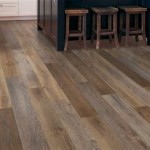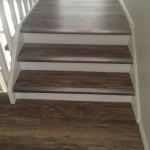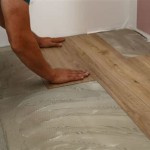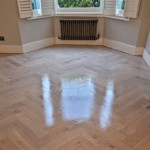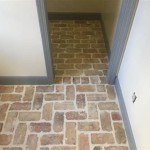Is Engineered Wood Flooring The Same As Laminate?
The world of flooring can be a bit confusing, especially when faced with terms like “engineered wood” and “laminate.” Though they share some similarities, these two types of flooring are distinct in their composition, construction, and overall characteristics. This article will break down the key differences between engineered wood and laminate flooring, helping you understand which option might be best suited for your needs.
Composition and Construction: A Key Distinction
The primary difference between engineered wood and laminate flooring lies in their composition. Engineered wood flooring is made from real wood, but it's not solid. It comprises multiple layers of wood veneer, plywood, or other wood products, each carefully arranged to create a stable and durable core. The top layer is typically made of a high-quality wood veneer, providing the flooring's aesthetic appeal. In contrast, laminate flooring does not contain any real wood. It’s constructed from several synthetic layers, including a core layer made of high-density fiberboard (HDF) or particleboard, overlaid with a decorative layer that imitates the look of various wood species, stone, or other materials. A clear protective layer is then applied on top to provide durability and resistance to scratches and stains.
Aesthetic Variations: Natural vs. Imitation
Both engineered wood and laminate flooring offer a wide range of aesthetic choices, but their approaches differ. Engineered wood flooring benefits from the inherent beauty of real wood, showcasing natural grains, knots, and color variations. The top layer’s veneer can be finished in various ways, including staining, oiling, or waxing, to achieve different styles and color tones. While laminate flooring can offer a convincing imitation of wood, stone, or other materials, it lacks the natural variation and texture found in real wood. The decorative layer is printed with patterns, colors, and textures that attempt to mimic the desired aesthetic. While this can create a visually appealing effect, it lacks the depth and authenticity of natural wood.
Durability and Performance: Different Strengths
Durability is an important consideration when choosing flooring, and engineered wood and laminate flooring exhibit distinct strengths. Engineered wood flooring, with its real wood core, can be refinished multiple times, extending its lifespan. This feature makes it an excellent choice for high-traffic areas where wear and tear are common. However, engineered wood can be susceptible to moisture damage, requiring careful installation and maintenance. Laminate flooring, on the other hand, is highly durable and resistant to scratches, stains, and moisture. Its synthetic composition makes it suitable for areas prone to spills or high foot traffic. However, unlike engineered wood, laminate flooring cannot be refinished. Once the decorative layer is worn, there are no options for restoring the floor’s appearance.
Cost and Availability: A Range of Options
The cost of flooring can vary significantly, and engineered wood and laminate flooring fall into different price ranges. Generally, engineered wood flooring is more expensive than laminate flooring. This difference in price reflects the use of real wood, the potential for refinishing, and the higher quality of materials involved. However, the cost can also vary depending on the specific wood species used, the finish applied, and the overall quality of the product. Laminate flooring offers a more budget-friendly option, with a wider range of price points available. It can be an excellent choice for those seeking a durable and attractive floor without breaking the bank.
Environmental Considerations: Sustainable Choices
Both engineered wood and laminate can offer sustainable options. Engineered wood flooring, with its use of real wood, can be sourced from sustainable forests, promoting responsible forestry practices. However, the manufacturing process can involve chemicals and energy consumption, requiring consideration of the overall environmental impact. Laminate flooring, while not containing real wood, can be made from recycled materials and manufactured using more resource-efficient methods. However, the synthetic components and the disposal of laminate flooring require careful attention to their environmental impact.
Conclusion
The choice between engineered wood and laminate flooring ultimately depends on your individual needs, preferences, and budget. While both offer appealing options for various applications, understanding their distinct qualities will help you make an informed decision. Consider factors like the look and feel of the flooring, desired level of durability, potential for refinishing, environmental considerations, and your budget. By carefully weighing these factors, you can choose the flooring that best suits your home and lifestyle.

Engineered Wood Flooring Vs Laminate Albany Woodworks

Solid Vs Engineered Laminate Wood Flooring Make The Right Choice

Choosing Between Laminate And Engineered Wood Flooring Jg

Engineered Hardwood Vs Laminate Floor Choice

5 Differences Between Engineered Wood And Laminate Flooring

Laminate Flooring Vs Engineered Hardwood Lifecore

Comparing Laminate Flooring To Engineered Wood Vs

Laminate Vs Engineered Wood Flooring Difference

Laminate Or Engineered Wood Flooring Which Is Best Step Into Style The Ultimate Guide To

Engineered Hardwood Vs Laminate Flooring
See Also
